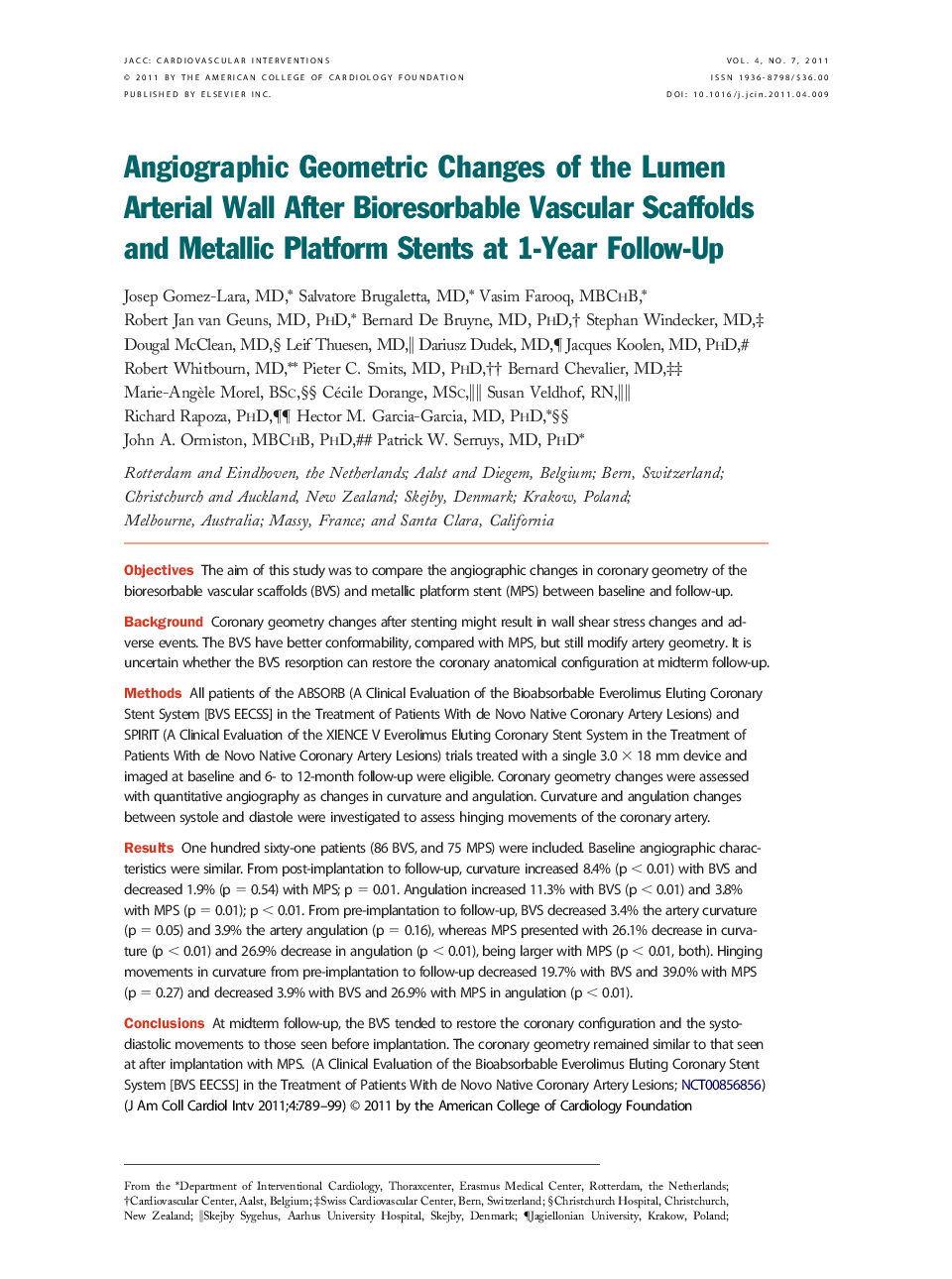| کد مقاله | کد نشریه | سال انتشار | مقاله انگلیسی | نسخه تمام متن |
|---|---|---|---|---|
| 2941195 | 1177059 | 2011 | 11 صفحه PDF | دانلود رایگان |

ObjectivesThe aim of this study was to compare the angiographic changes in coronary geometry of the bioresorbable vascular scaffolds (BVS) and metallic platform stent (MPS) between baseline and follow-up.BackgroundCoronary geometry changes after stenting might result in wall shear stress changes and adverse events. The BVS have better conformability, compared with MPS, but still modify artery geometry. It is uncertain whether the BVS resorption can restore the coronary anatomical configuration at midterm follow-up.MethodsAll patients of the ABSORB (A Clinical Evaluation of the Bioabsorbable Everolimus Eluting Coronary Stent System [BVS EECSS] in the Treatment of Patients With de Novo Native Coronary Artery Lesions) and SPIRIT (A Clinical Evaluation of the XIENCE V Everolimus Eluting Coronary Stent System in the Treatment of Patients With de Novo Native Coronary Artery Lesions) trials treated with a single 3.0 × 18 mm device and imaged at baseline and 6- to 12-month follow-up were eligible. Coronary geometry changes were assessed with quantitative angiography as changes in curvature and angulation. Curvature and angulation changes between systole and diastole were investigated to assess hinging movements of the coronary artery.ResultsOne hundred sixty-one patients (86 BVS, and 75 MPS) were included. Baseline angiographic characteristics were similar. From post-implantation to follow-up, curvature increased 8.4% (p < 0.01) with BVS and decreased 1.9% (p = 0.54) with MPS; p = 0.01. Angulation increased 11.3% with BVS (p < 0.01) and 3.8% with MPS (p = 0.01); p < 0.01. From pre-implantation to follow-up, BVS decreased 3.4% the artery curvature (p = 0.05) and 3.9% the artery angulation (p = 0.16), whereas MPS presented with 26.1% decrease in curvature (p < 0.01) and 26.9% decrease in angulation (p < 0.01), being larger with MPS (p < 0.01, both). Hinging movements in curvature from pre-implantation to follow-up decreased 19.7% with BVS and 39.0% with MPS (p = 0.27) and decreased 3.9% with BVS and 26.9% with MPS in angulation (p < 0.01).ConclusionsAt midterm follow-up, the BVS tended to restore the coronary configuration and the systo-diastolic movements to those seen before implantation. The coronary geometry remained similar to that seen at after implantation with MPS. (A Clinical Evaluation of the Bioabsorbable Everolimus Eluting Coronary Stent System [BVS EECSS] in the Treatment of Patients With de Novo Native Coronary Artery Lesions; NCT00856856)
Journal: JACC: Cardiovascular Interventions - Volume 4, Issue 7, July 2011, Pages 789–799